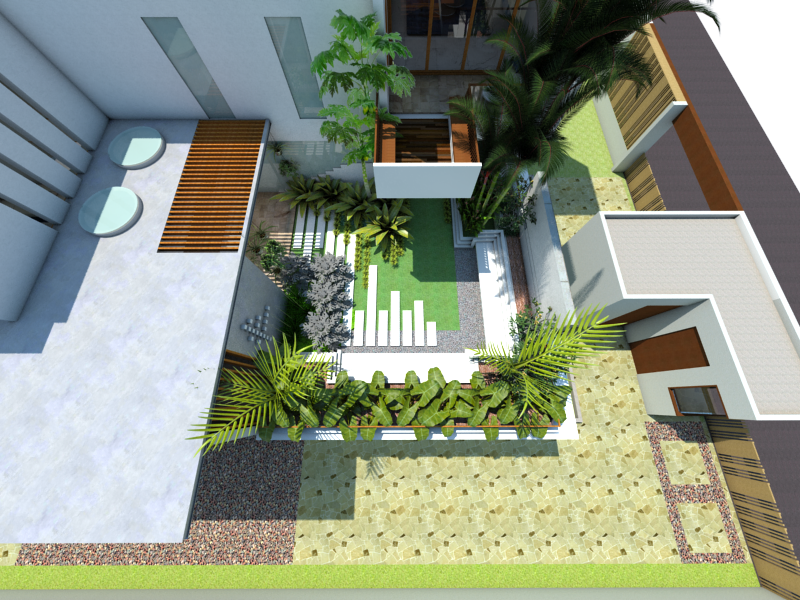Office
New Bel Road
Bangalore , Karnataka
India (560054)

Contact : +91 9632587562
Landscape architecture design is a multidisciplinary field that merges art and science to create functional, sustainable, and aesthetically pleasing outdoor spaces. It involves planning and designing landscapes to improve urban and rural environments, balancing human needs with environmental sustainability. This essay delves into the principles, elements, and significance of landscape architecture design, highlighting its role in enhancing quality of life and environmental stewardship.
Sustainability: Sustainability is at the core of landscape architecture design. It emphasizes the use of eco-friendly materials, conservation of natural resources, and integration of green infrastructure. Sustainable design practices aim to minimize environmental impact, promote biodiversity, and ensure the longevity of landscapes.
Functionality: Landscapes should meet the functional needs of the users. This involves considering the practical aspects of space usage, accessibility, safety, and maintenance. Functional landscapes provide spaces for recreation, social interaction, and relaxation while supporting the overall infrastructure.
Aesthetics: The visual appeal of a landscape is crucial. Aesthetics in landscape architecture involves the careful selection of plants, materials, colors, and textures to create harmonious and visually stimulating environments. Design elements such as focal points, symmetry, and balance play a significant role in achieving aesthetic goals.
Contextual Design: Landscapes should respond to the cultural, historical, and environmental context of the site. Contextual design respects the existing features of the site, such as topography, climate, and native vegetation, while incorporating local cultural and historical elements to create a sense of place.
Ecological Balance: Maintaining ecological balance is vital in landscape architecture. This involves creating habitats for wildlife, preserving existing ecosystems, and implementing sustainable practices such as rainwater harvesting, soil conservation, and the use of native plants.
Plants: Plants are fundamental to landscape design, providing color, texture, and form. They contribute to the ecological health of the area by improving air quality, reducing heat islands, and supporting wildlife. The selection of plants must consider factors such as climate, soil type, and maintenance requirements.
Water Features: Water features like ponds, fountains, and streams add a dynamic element to landscapes. They enhance aesthetics, create a sense of tranquility, and support local wildlife. Sustainable water management practices, such as using recycled water and designing for stormwater management, are essential.
Hardscapes: Hardscapes include non-plant elements like walkways, patios, walls, and seating areas. These elements provide structure and functionality to the landscape. The choice of materials, such as stone, wood, and concrete, should align with the overall design theme and sustainability goals.
Lighting: Proper lighting enhances the usability and safety of outdoor spaces while highlighting key features of the landscape. Energy-efficient lighting solutions, such as LED lights and solar-powered fixtures, contribute to sustainability.
Structures: Pergolas, gazebos, and other structures provide shade, shelter, and visual interest. These elements should be designed to complement the landscape and meet the functional needs of the space.
Enhancing Quality of Life: Well-designed landscapes improve the quality of life by providing spaces for recreation, relaxation, and social interaction. They contribute to physical and mental well-being by offering green spaces for exercise, contemplation, and community engagement.
Environmental Stewardship: Landscape architecture plays a critical role in environmental conservation. Sustainable design practices help mitigate the effects of urbanization, such as reducing stormwater runoff, improving air and water quality, and conserving natural habitats.
Economic Benefits: Attractive and functional landscapes can enhance property values and contribute to the economic vitality of an area. Well-designed public spaces can attract tourists, boost local businesses, and create job opportunities.
Cultural and Historical Preservation: Landscape architecture helps preserve and celebrate cultural and historical heritage. By integrating historical elements and local traditions into the design, landscapes can tell the story of a place and foster a sense of identity and pride among residents.
Climate Resilience: Landscape architecture contributes to climate resilience by incorporating features that adapt to changing weather patterns and mitigate the impacts of climate change. Green roofs, rain gardens, and permeable pavements are examples of design strategies that enhance resilience.
Landscape architecture design is a vital discipline that bridges the gap between human needs and environmental sustainability. By adhering to principles of sustainability, functionality, aesthetics, contextual design, and ecological balance, landscape architects create spaces that enhance the quality of life, promote environmental stewardship, and celebrate cultural heritage. As urbanization continues to rise, the role of landscape architecture in crafting resilient, beautiful, and functional outdoor spaces becomes increasingly important. Through thoughtful design and innovative practices, landscape architects contribute to a more sustainable and harmonious relationship between people and their environments.